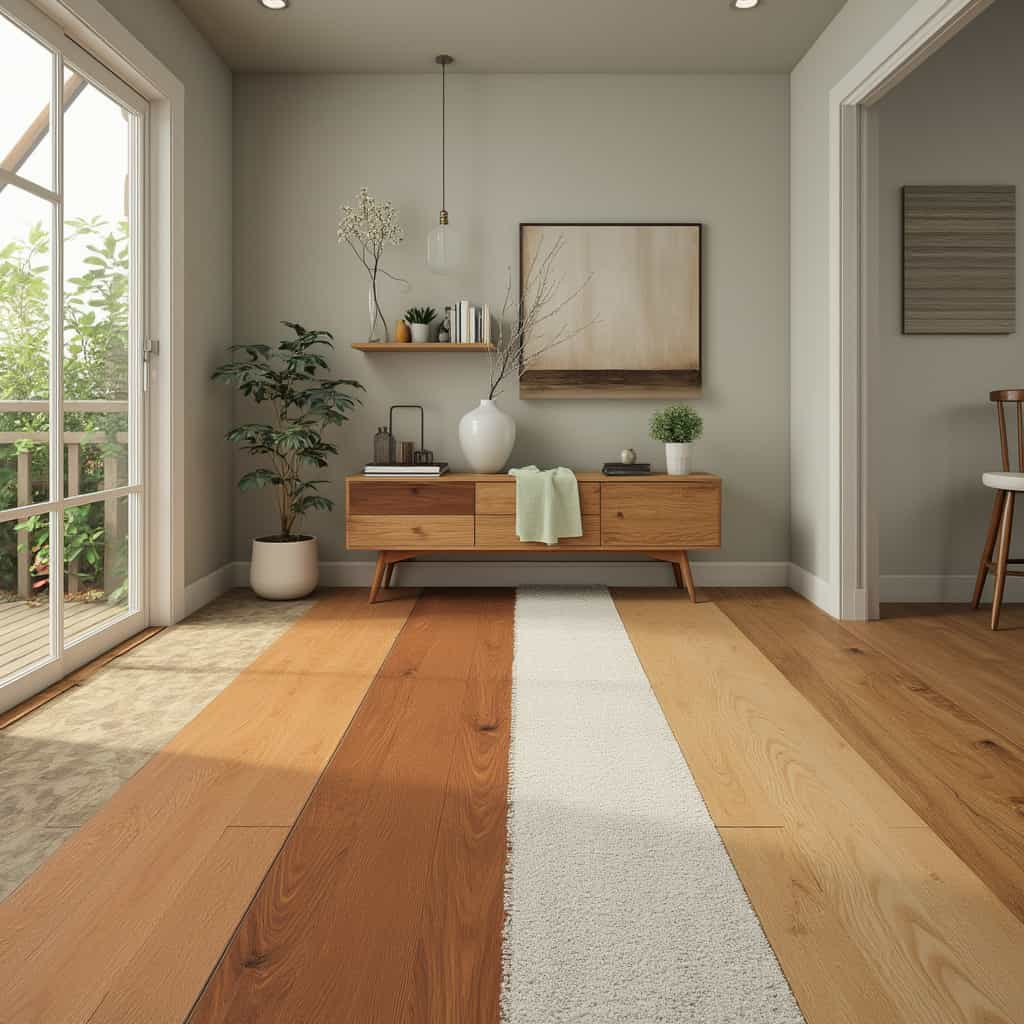The floor beneath our feet is often overlooked, yet it plays a crucial role in the overall ambiance and functionality of a home. With an array of flooring options available today, homeowners face the challenging decision of selecting the perfect one that suits their needs and budget. From hardwood to laminate, each type of flooring comes with its unique set of advantages and considerations. Understanding these can help in making an informed decision that enhances your home’s aesthetic appeal while adding to its value.
Hardwood flooring has long remained a favorite choice for homeowners seeking elegance and durability. This type of flooring is known for its timeless appeal and can last for decades if maintained properly. Among the hardwood options, oak, maple, and cherry are the most popular due to their rich textures and colors. Although the cost of hardwood can be relatively high, ranging from $6 to $12 per square foot, its longevity often justifies the investment. Moreover, it adds significant value to a home, making it a preferred choice for many.
Installing hardwood flooring can be a meticulous process that generally requires professional help. The preparation includes acclimating the wood to your home’s humidity levels to prevent expansion or contraction. Nonetheless, the result is a seamless and sophisticated finish that many homeowners cherish. Moreover, the installation typically costs between $3 to $5 per square foot, which should be factored into the total budget.
Comparatively, laminate flooring presents a cost-effective alternative to hardwood. Known for its affordability and ease of installation, laminate flooring can mimic the appearance of wood or stone at a fraction of the cost. Typically, materials and installation can cost between $2 to $4 per square foot. This makes laminate a budget-friendly option for those looking to achieve a stylish look without breaking the bank.
However, while laminate is more resistant to scratches and scuffs compared to hardwood, it is susceptible to water damage, which can limit its application in areas prone to moisture, such as bathrooms or basements. The upside is that laminate flooring is relatively simple to install as a DIY project, sparing homeowners the labor costs associated with professional installation.
Tile flooring, on the other hand, strikes a balance between elegance and practicality. Often employed in kitchens and bathrooms due to their water resistance, tiles are available in a myriad of patterns and materials, including ceramic, porcelain, and natural stone. Tiles can range in price from $3 to $20 per square foot, depending on the material, and installation costs can add another $5 to $10 per square foot.
Despite being a durable option, tile flooring can feel cold and hard underfoot, which might not be suitable for all rooms. However, incorporating underfloor heating can alleviate this drawback, providing comfort during colder seasons. Tile installation can be labor-intensive, demanding precision and skill, which might necessitate professional installation to avoid issues like uneven leveling.
Carpet remains a popular choice for many homeowners seeking comfort and warmth, especially in bedrooms and living areas. Carpet flooring prices range from $3 to $7 per square foot, including installation. Its versatility in color, texture, and pattern provides ample customization to suit diverse tastes and décor.
While carpets add a cozy touch, they require regular upkeep, such as vacuuming and occasional deep cleaning, to maintain hygiene and appearance. Advancements in technology have led to the creation of stain-resistant and more durable carpets, widening their suitability across different home environments.
While cost is a significant factor, selecting the right flooring should equally consider the specific needs of a room and existing home environment. As the saying goes, ‘The floor is the foundation of any beautiful room.’ Each flooring type brings its character and serves different purposes, helping homeowners create the perfect space tailored to their lifestyle.
You may also like
Floor Repair: Options and Benefits for Homeowners
Floor repair is an essential aspect of home maintenance. This article explores various repair options, costs, and benefits, providing insights into regional differences and expert opinions.
Buy a Suburban Detached Home: Opportunities, Costs and Considerations
As urban living becomes increasingly expensive, many prospective homeowners are looking toward suburban areas for more affordable housing options. This article explores the advantages and challenges of purchasing a detached home in the suburbs, compares market options, and provides insights into securing the best deals.
Why buy an apartment in the City Center ?
Purchasing an apartment in the city center involves a myriad of considerations, including financial, practical, and lifestyle factors. This article explores various proposals, compares cost-effective options, and highlights the potential challenges and benefits of city-center real estate acquisition.
Modern Bathtub: Symbols of comfort and style
Bathtubs have evolved from basic sanitary fixtures to luxurious symbols of comfort and style. This article dives into the latest trends, innovations, and models in the bathtub industry, providing insights into the current marketplace and offering recommendations for great value products.
Shower Innovations 2025: Latest Trends and Technologies in the Bathroom
As we venture into 2025, the shower industry is brimming with innovations, from zero-threshold showers to smart technologies. This article delves into the newest models, market trends, and the best price-quality offerings available, along with expert opinions and geographical purchasing trends.
